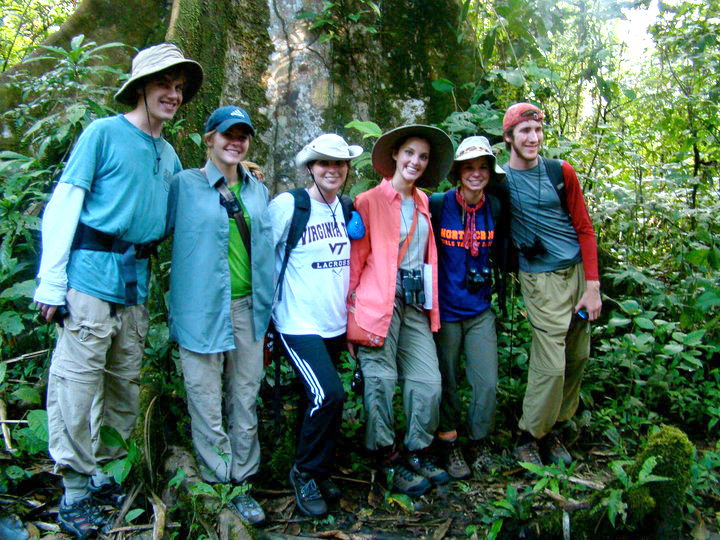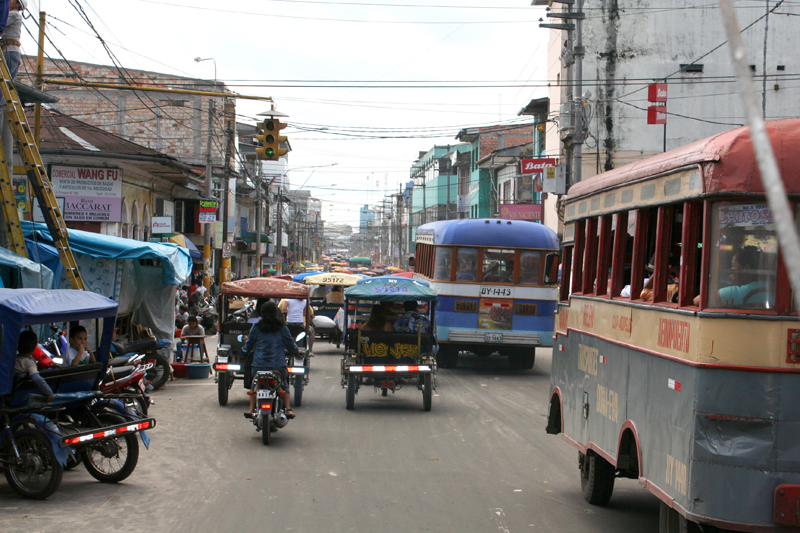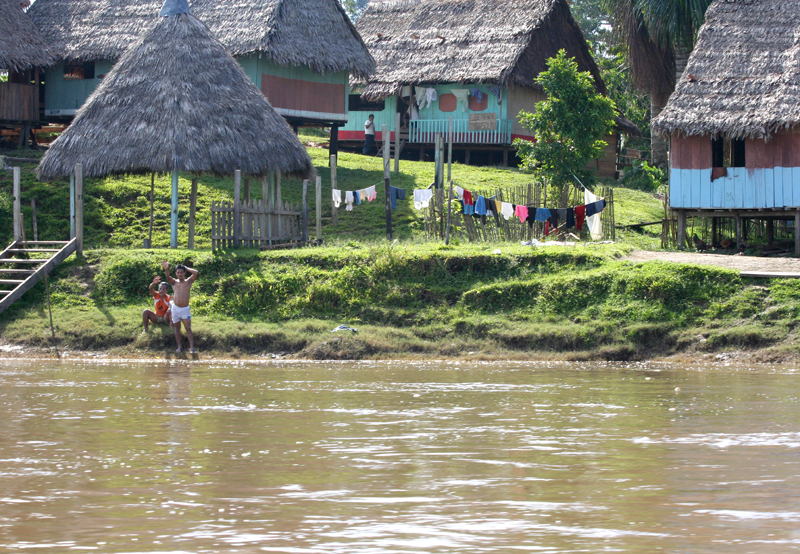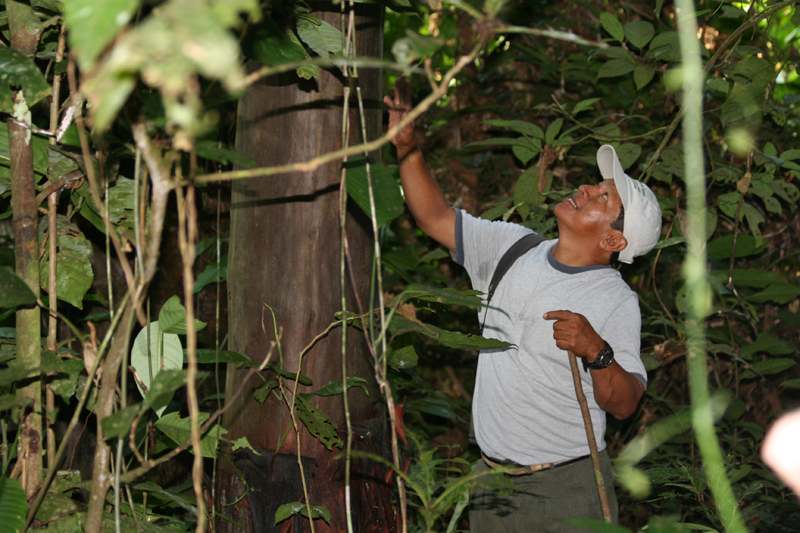Expedition Amazon…
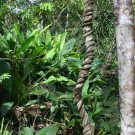
We’ve got chiggers swimming in our blood
And bot flies in our neck
Disease abound from Amazon mud
And our hair is a wreck
Our bathroom is a scary place
With over 50 rules
Describing how exactly
One should use the loo’s
Those bumps aside this place is great
As if this trip was planned by fate
When we’ve all returned (hopefully intact)
We’re bringing the jungle back!
~ Caitlin Verdu, Amazon Expedition Member
Our Amazon adventure started with a 35-hour travel excursion (from home to our Amazon Lodge destination). Team members flew in from all parts of the country. The Aughey’s from Florida, John Burr (adult) from Florida, Sandy Patterson (adult) from Virginia, Dr. Bruce Rinker (adult and trip leader) from Virginia and 6 high school students from Virginia – Ty, Nick, Tyler, Kaki, Amy and Caitlin. The four adults (Team Harpe) and six students (Viper Team) converged upon Miami International for their 6 1/2-hour 12:20A flight to Lima. Kaki’s luggage did not make the flight but she handled the situation with grace and calm!
It was 10:30P and Viper Team was hungry, not having eaten since lunch. They set out near the gate to find a café but unfortunately, all food kiosks were closed except for the duty free shop where imported chocolates were quickly snapped up and gobbled down! We flew into the night, tired yet restless with excitement. Upon arrival at Lima we met one of our guides, Santiago from Mexico who would accompany us for the rest of the trip. He presented us with our first lesson, a piece of unknown fruit that we were challenged to identify. None of us knew what this strange looking fruit was so he explained that it was a “Chitimoyo” common to Peru. It was a pale, fleshy avocado -type fruit that tasted sweet and refreshing!
The airport was busy and it was clear that we were no longer in the U.S. We were now in a foreign land and for many on the trip it was the first time. We tried to be mindful of the social responsibility we had as U.S. citizens to assimilate the appropriate customs and traditions of the new land we were experiencing! The faces we saw were dark, yet gentle and friendly and the language was no longer English but Spanish.
We quickly boarded our flight to Iquitos, where upon landing we were greeted by our Amazonian expert guide, Julio. Julio lives in Iquitos with his wife and works for the Lodge as a Guide. He has done this for 25 years. Prior to that he lived in an Achuar village in the Amazon with his parents and siblings. Interestingly, the Achuar are a peaceful tribe that border the northern edge of Peru (near Ecuador) and have a history of being the victims of the Shuar tribe who practice “tsantsa” or head-hunting similar to the Jivaro’s. More stories of Julio’s past would unfold as the trip continued. For now, the porters were quickly gathering our duffels and loading them into an open air bus. While the language they spoke sounded like Spanish, we were told some of them were speaking Quechua, the native language of Peru.
Julio directed the driver to take us through the “department” of Iquitos to the Explorama boat launch where he would ensure our safe passage up the river to our Lodge. He educated us along the way explaining that the city was celebrating a “holy day” which was a holiday. There were many people but very few cars. Iquitos is a large city of Peru with no main roads or highways connecting it to the rest of the country. All goods and supplies that are not local have to be flown or shipped in. The town’s people travel primarily by motorbike or by motortaxi. All the drivers are men except for one woman who drives a car. This was our first hint at the “machismo” society that is predominant in Peru!
After a quick stop in Iquitos where Kaki purchased some much needed clothing since her luggage did not make the flight, we arrived at the boat launch where we boarded our “waterbus” for our 2 hour trip up the mighty Amazon! The water was coffee-colored and the river was great and wide. We observed villages along the banks of the river as we motored to our destination. Some villages were large and some only consisted of a few huts. Some were abandoned long ago and were slowly being ravaged and consumed by the forest. The river was 1/3-mile wide and seemed to be the main “highway” through the Amazon basin.
We made our way to a small tributary where we turned in and began to motor much more slowly since the banks were now closer to us. It was narrow and very shallow. Julio pointed to the water marks on the trees near the banks that were made from the May rains. The lines were at least 20 feet higher than the current water level! We motored past small Yagua villages as the vegetation became denser on either side of us. The trees were full of life! Various birds and butterflies flitted about. Bromeliads and other epiphytes dripped from the branches providing micro-ecosystems to other forest inhabitants. And then, we encountered the most hated creature in all of the Amazon….the mosquito! They were everywhere and we were prepared with our jungle attire and our various repellants. We were now at war with these “jungle soldiers” and we would battle them for the next 8 days!
We arrived at our Lodge where we were assigned to our “rooms.” These were roughly 10×15 foot open-air rooms with thatched roofs, no electricity and two modest bunk beds enshrouded with mosquito netting. Fortunately, each of our rooms had flush toilets and a shower. Unfortunately, there was no hot water. Although, in this humid and steamy environment, cold showers were often refreshing once acclimated! Lighting at night was by oil lamps and although the facilities seemed very primitive…they were quite comfortable and enjoyable. There was a great room close to our rooms that contained 14 hammocks where one could relax and listen to the sounds of the forest or view the bats that made their homes in the thatch above one’s head!
After we settled into our rooms we gathered with Julio for a 1-mile hike through the jungle. Julio pointed out monkeys high in the forest canopy who were traversing the branches like a busy highway! He identified so many birds, plants and insects, telling us wondrous facts about each one. He was truly a walking encyclopedia of forest information! The trees were as tall as sky-scrapers and some of their root systems engulfed us. The moist, dense foliage provided the perfect haven for the jungle soldiers or mosquitoes that were furiously trying to feast on the newcomers! Each living thing we encountered depended on another or provided some benefit or mutualism that contributed to the whole of this new world we were experiencing!
After our hike we cleaned up and relaxed in the hammocks as we awaited the glorious sound of the jungle drums calling us to dinner. There joined together in the dining hall where we feasted on local Peruvian fare which included salad, rice, beans, fresh vegetables, beef, rolls, fruits and jello. The food was so flavorful and lacked any preservatives or chemicals that we are so accustomed to in the U.S. We discussed our hike over dinner and just enjoyed each other’s company – getting to know each other.
After dinner we gathered at the dock where Julio took us on a “night float.” We boarded a small motor boat with our flashlights in hand. The captain of the boat proceeded into the tributary in pitch darkness other than our flashlights. We looked up at the night sky and it was studded with millions and millions of stars – and we quickly spotted the Southern Cross, a constellation that can only be seen south of the equator! The stars were so evident and so clear due to the fact that there is very little light pollution to filter their presence. Julio pointed out nocturnal life all around us. We spotted a great Kingfisher (bird) sitting on a branch. We also spotted a baby Amazon Tree Boa coiled in a tree which Julio proceeded to catch and pass around for all of us to hold before we put it back in the tree! It was an absolutely amazing adventure ride. We returned to the dock and to our rooms where we all crashed after our first day of experiencing the Amazon. This was just the first day!



